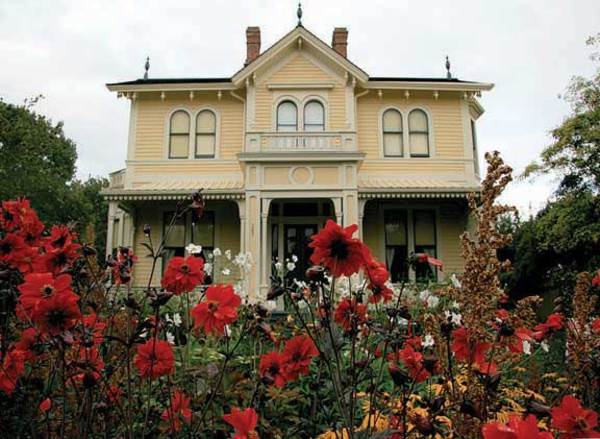
Today’s newest annual variations add even more punch to tried-and-true favorites. (Photo: Robyn Hanson)
Each year, plant breeders introduce hundreds of new, interesting varieties that keep these beloved standbys refreshing and contemporary. Adding new twists to old favorites doesn’t diminish their classic looks. When placed in a traditional or historic garden, these bedding beauties still offer an old-fashioned feel—they just look nicer for a longer time.
That’s because early garden plants are more like their wild-type (or parent) species, which often means they are less robust performers with leggier stems and smaller flowers that come in fewer color variations. With careful selection and hybridization, however, newer, better varieties hit the garden scene each year. Only the best remain in commerce, which is why a number of garden-worthy “heirloom” varieties are still available. A plant breeder’s goal in introducing new varieties is to offer more eye-catching plants with bigger show and better overall performance.
Dahlias
Dahlias were first discovered by Spanish conquistadors in 17th-century Mexico, where their flowers had been revered by the Aztecs centuries earlier. The first bedding dahlias were sold to North American gardeners in the beginning of the 1800s. Early forms had single and double flowers with tall, weak stems that stood above more open, less vigorous plants. Since then, thousands of varieties of all colors, shapes, and sizes have become available, many with more compact habits and increased verve.
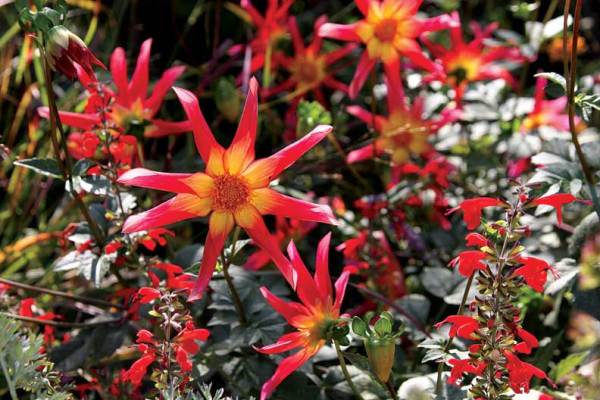
The striking red and yellow blooms of Dahlia ‘Honka Surprise.’ (Photo: Jessie Keith)
Some newer dahlia introductions offer old-fashioned single blooms in spectacular color combinations. One of these elegant beauties is Mystic™ Desire (also called ‘Scarlet Fern’), a recent addition to the Mystic™ Series. Its sultry single flowers are deep tangerine orange and stand tall on strong, slender stems that hover above a tidy clump of purple-tinged foliage. The effect is stunning. Another innovative beauty is ‘Honka Surprise,’ which sports huge single reddish pink and yellow flowers with petals that curl inward.
Coleus
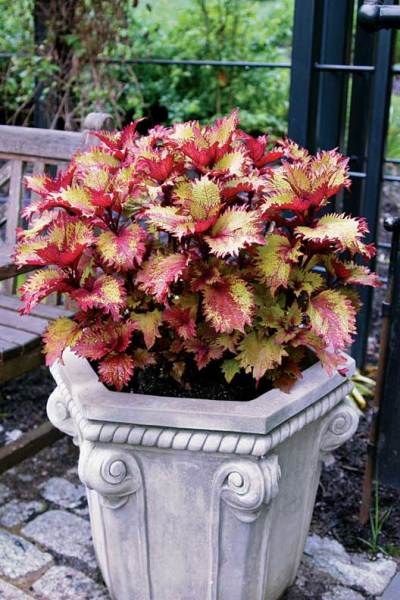
The warm color of ‘Henna’ coleus stands alone in this classic garden pot. (Photo: Jessie Keith)
Coleus is arguably the greatest bedding plant for knockout foliage. The colorful leaves of this Southeast Asian native add voluminous color to partially shaded landscapes all summer. Wild coleus tend to have simple leaves in broken shades of purple, green, red, and yellow, with the first garden varieties also bearing these simple colors— though many also had ruffled or lobed edges. Today’s offerings are much more diverse and exciting.
The dramatic new ‘Henna,’ with coarsely edged chartreuse leaves highlighted in copper and burgundy, is a perfect example of exceptional coleus color innovation. The Flume™ is another novel upstart selection, albeit with more subdued color. It’s a low-growing, bushy coleus with elongated pink leaves dotted with burgundy blotches and edged in green.
Impatiens
Almost every shade gardener has planted impatiens, also called busy lizzies. These indispensable bedding plants have origins in East Africa. They were first introduced to the American garden market in the late 19th century, but didn’t become widely popular until the early 20th century. Wild forms are taller, less bushy, and have smaller flowers in shades of red, pink, or white. Modern introductions tend to be more compact and bloom-filled, and come in many sizes, colors, and forms.
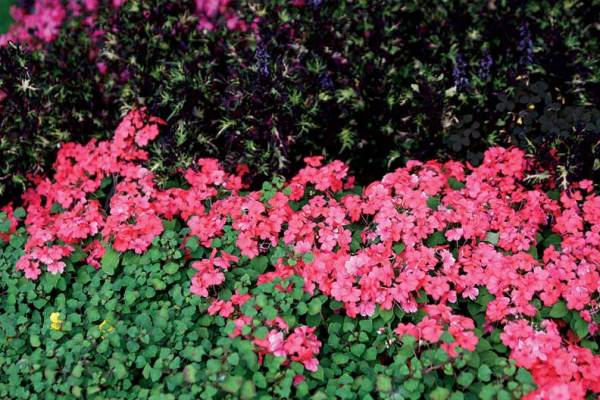
Impatiens Firefly™ Watermelon adds a sweep of big color to this flower border. (Photo: Jessie Keith)
Several spectacularly tiny dwarf impatiens have been pioneered in recent years. Some of the best include the diminutive beauties in the Little Lizzy™ and Firefly™ series. Unlike the popular members of the Elfin Series, a group of compact impatiens first introduced in the 1970s, these recent varieties have both tiny flowers and short stature. The dainty blooms densely cover the plants, so they create a big show despite their size. Pretty new selections, like the soft pink Firefly™ Watermelon, are especially appealing.
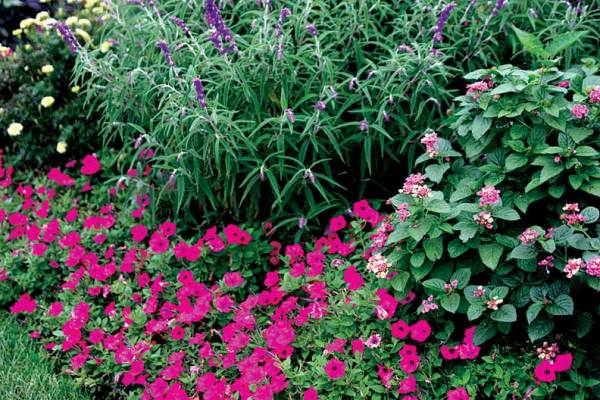
Supertunia® Mini Bright Pink has lots of electric pink flowers perfect for brightening garden edges. Pair it with Lantana and Salvia leucantha for a big garden show. (Photo: Jessie Keith)
Petunias
Contemporary petunias are hybrids of several species native to Mexico and North America. The best known of these is Petunia integrifolia, a low-growing specimen that bears lots of small, purple-pink flowers in summer. When petunias were first introduced in the early to mid-19th century, they were much like their wiry, small-flowered parents. Larger, double-flowered forms started appearing in popular seed catalogs around the 1870s. Today’s plants come in lots of novel shapes and sizes, and are more floriferous and vigorous.
One outstanding new petunia with old-fashioned looks is Supertunia® Mini Bright Pink, a member of the popular Supertunia® Series. Its numerous small pink flowers resemble those of Petunia integrifolia, but the blooms are more abundant and the trailing plants look good with minimal care from spring to fall.
Culture and Use
These bedding ornamentals are all wonderfully easy to grow but are also frost tender, so they must be grown when outdoor temperatures are warm and accommodating. Generally speaking, dahlias and petunias prefer full to partial sun, and coleus and impatiens are best suited to sites with partial sun or shade. When watered regularly and provided fertile potting soil or well-drained garden loam, these plants will thrive. Adding slow-release fertilizer, or regular applications of water-soluble fertilizer, will encourage them to perform to their fullest. Dahlias can be dug up in the winter, stored indoors during the cold, and replanted outside in late spring after the threat of frost has passed.
Flower standards like these grow as well in garden containers as they do in colorful old-fashioned borders. Their bright colors are easy to design with and will add charm to any older home. This summer, add a new trick to your garden repertoire with a few of these soon-to-be classics.
Looking for more garden inspiration? See our list of the best hydrangeas for your historic garden.
Jessie Keith is a professional horticulturist, garden writer, and plant photographer who lives in Wilmington, Delaware.







